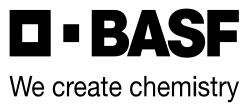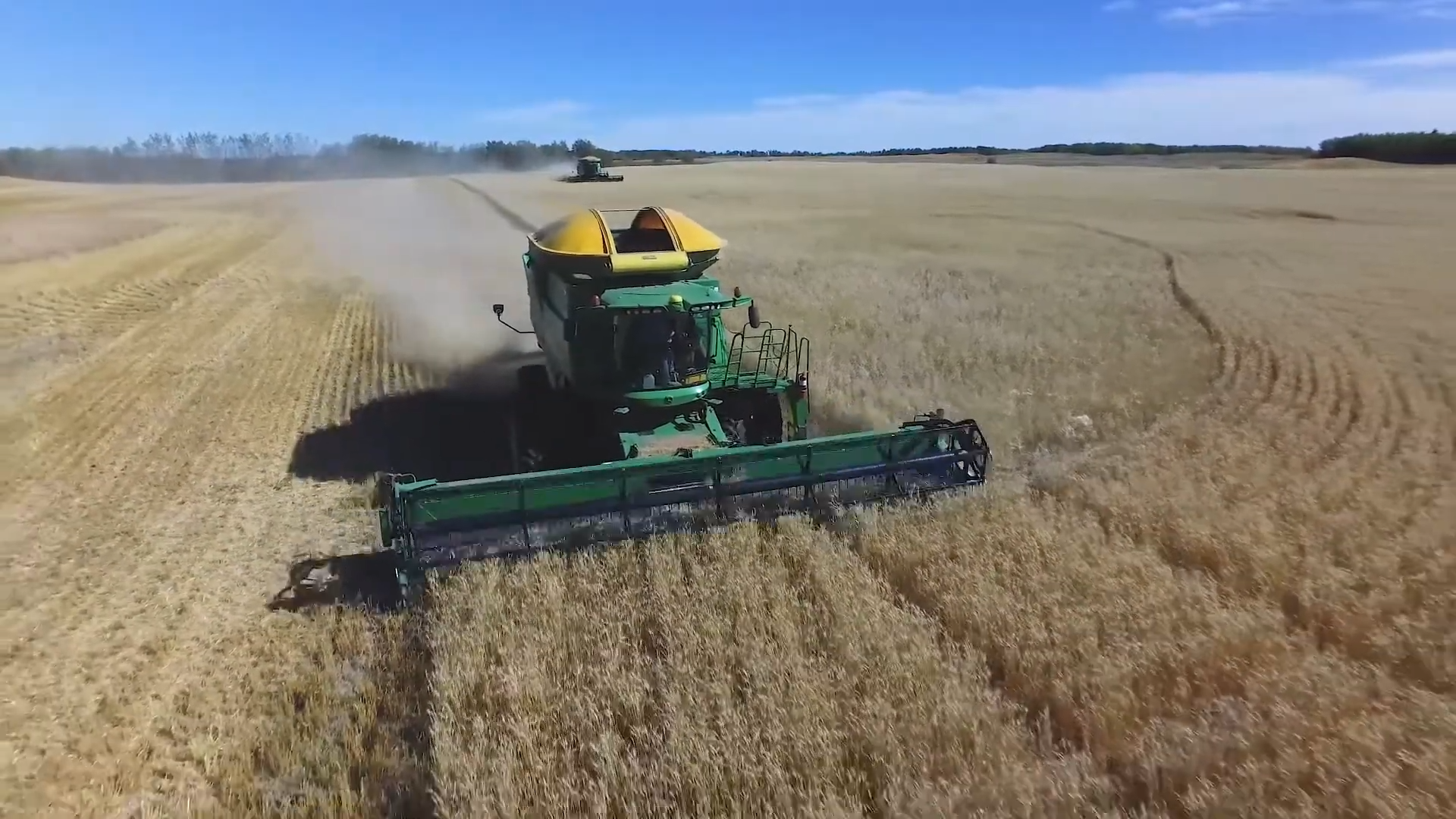Heat LQ
Group 14
Maximize efficiency with enhanced crop and weed dry down.
When deciding to straight cut your canola, Heat® LQ herbicide can help you cross the finish line quicker. It delivers consistent crop and weed dry down, for easier stock cutting and increased harvest speeds. Heat LQ is also the perfect match for InVigor® canola hybrids with patented Pod Shatter Reduction technology. For a smoother, more profitable finish.
Labels & SDS
8 AVAILABLE
Labels & SDS
Heat LQ Pre-harvest
Crops

Canola
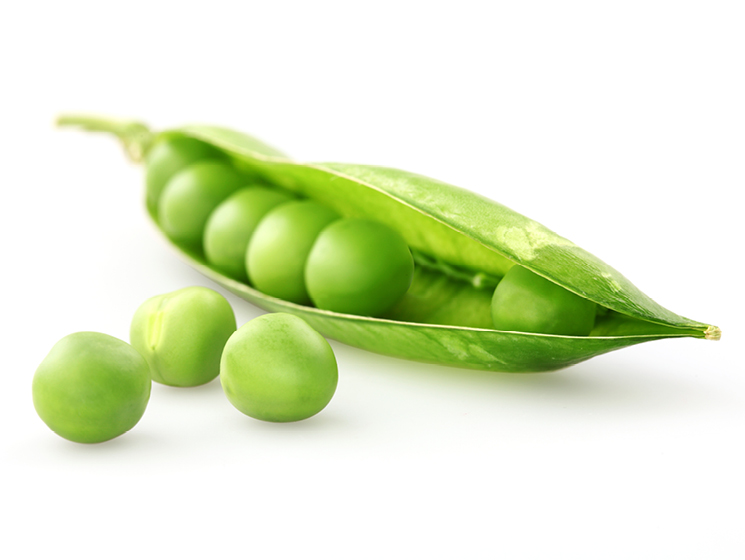
Field Peas

Red Lentils
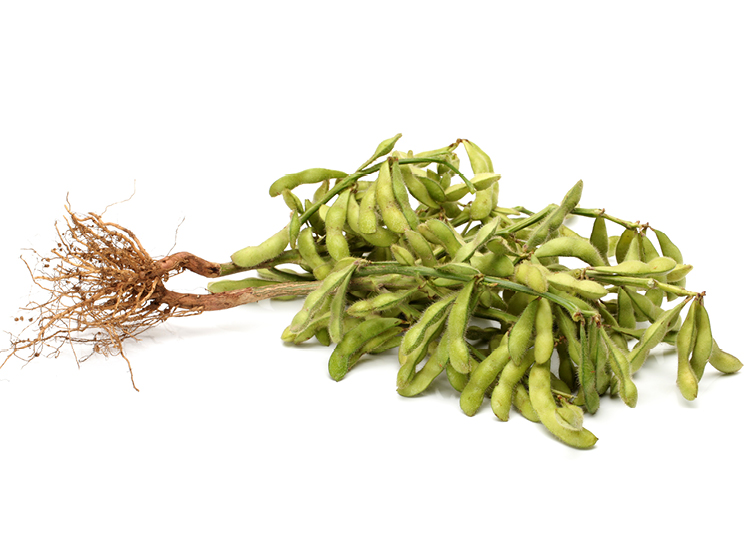
Soybeans
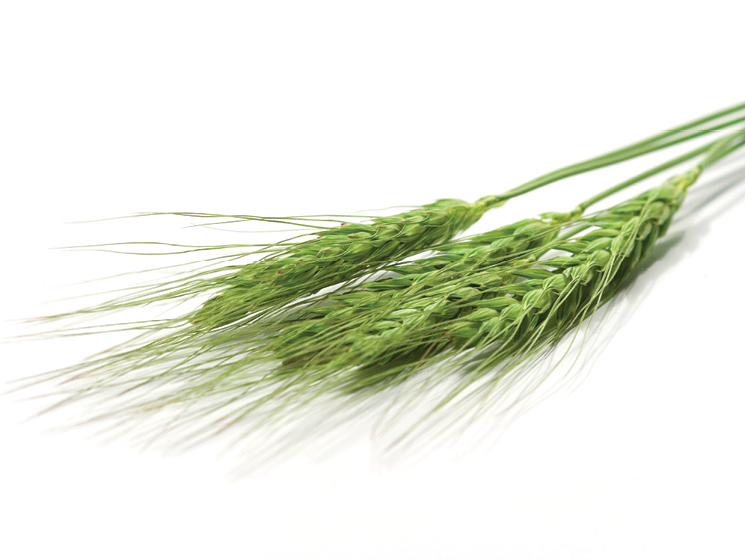
Wheat
Benefits
- Consistent crop and weed dry down
- Simplify your harvest:
- Easier crop cutting
- Increased harvest speed
- Decreased fuel consumption
- Less dockage
- Easier crop cutting
- Cleaner fields the following spring
Performance Trials
Weed dry down, 4 to 22 days after application

Harvest productivity comparison of harvest aids

Complete canola dry down
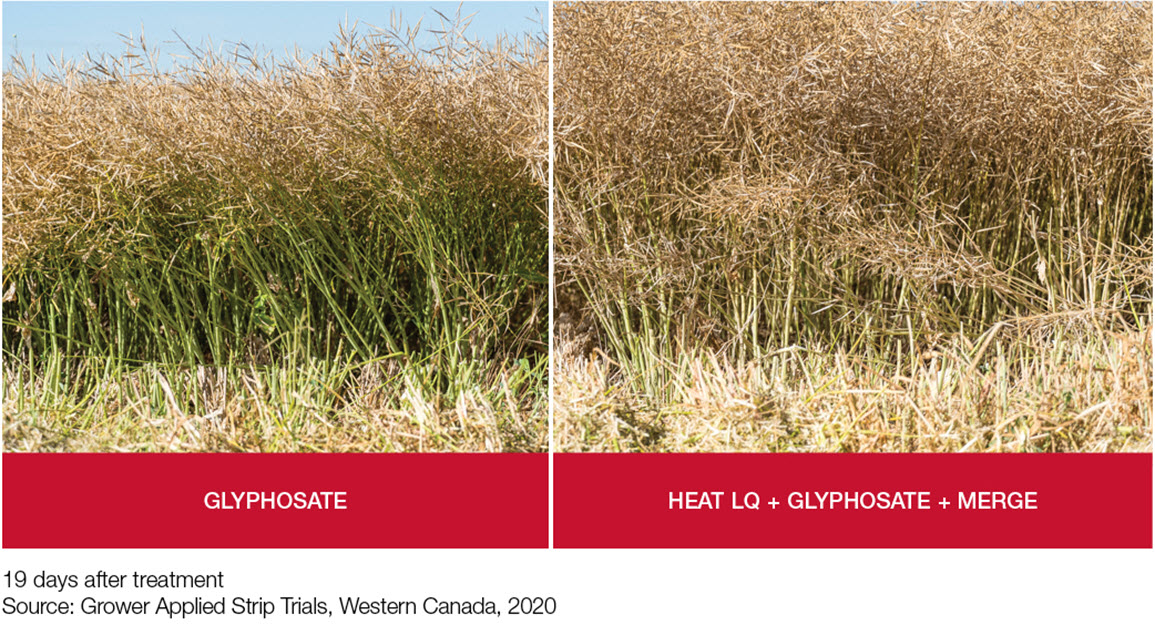
Heat LQ harvest aid combine comparison
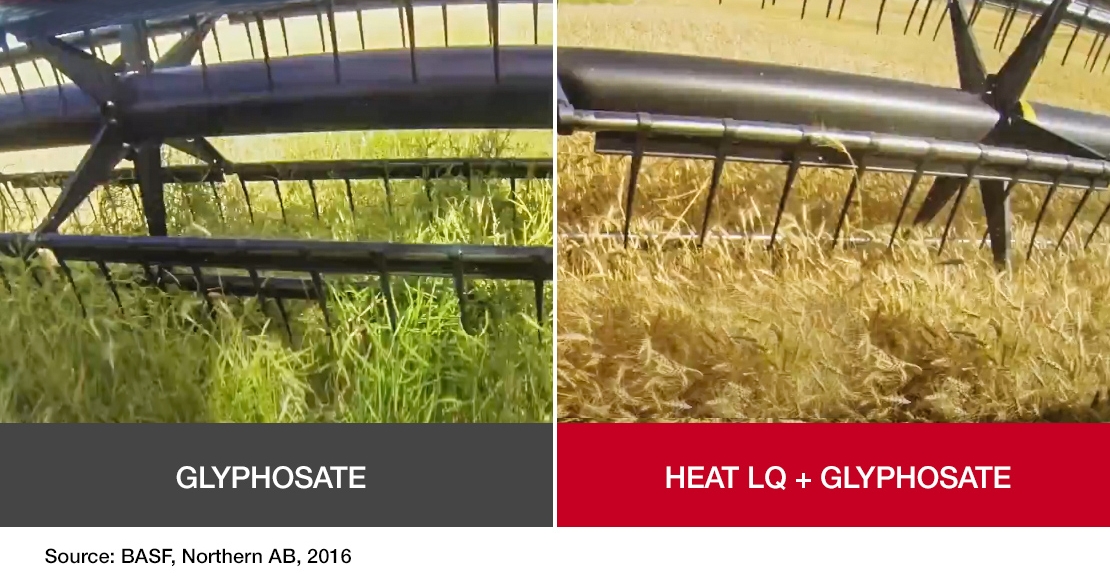
Application Tips
Pre-harvest
- Rainfastness – Heat LQ is extremely rainfast and is only limited by glyphosate.
- Follow the glyphosate manufacturer’s recommendation for rainfast guidelines.
When to Apply
Pre-harvest
| Crops | Staging1 |
|---|---|
Harvest Aid |
|
Canola |
Apply when the crop has reached 80% seed- colour change. |
Chickpeas2 |
Apply when majority of plants are mature with only the upper part remaining green. Seed moisture is 30% or less. Majority of Desi type seeds are yellow/brown, and Kabuli type seeds are tan/white. |
Dry common beans2,3, soybeans2 |
Apply when stems are green to brown, pods are mature (yellow, brown) and 80 - 90% of leaves have dropped. |
Field peas2 |
Apply when about 75% of pods have dried down (changed colour). |
Flax4 |
Apply when 75 to 80% of bolls are brown and when seed moisture is less than 30%. |
Red Lentils5 |
Apply when bottom 15% of pods are mature and brown with ripened seeds. The bottom pods should rattle when shaken. |
Sunflowers6 |
Apply when the backs of the heads and bracts are turning yellow, and seed moisture is 20 - 30%. |
Weed Management |
|
Barley7, triticale, wheat |
Hard dough stage with less than 30% moisture. A thumbnail impression remains on seed. |
Maximum Residue Limits
Please note: At the time of printing (2023), BASF has not fully established import tolerances (maximum residue limits (MRLs)) for mustard for all markets around the world. Because this crop is heavily exported, and some exports are made to markets where these MRLs have not been established, BASF does not recommend the use of Heat LQ as a harvest aid on mustard for the 2023 season.
1 Heat LQ herbicide must be applied after physiological maturity (less than 30% seed moisture).
2 Consult with grain buyer prior to application as the Keep It Clean 2023 Product Advisory indicates caution for glyphosate applications on all pulse crops except red lentils.
3 When tank mixed with glyphosate, consult glyphosate label or your BASF Sales Representative for information regarding use on specific varieties of dry common beans.
4 Glyphosate is not supported for pre-harvest use on flax. Use Heat LQ as a standalone product only.
5 Heat LQ is supported for pre-harvest use on red lentil varieties only. DO NOT apply Heat LQ pre-harvest to green lentils. Please check with your grain buyer prior to the pre-harvest application of Heat LQ in red lentils.
6 Glyphosate is not registered for pre-harvest use in sunflowers. Use Heat LQ as a standalone product only.
7 BASF supports the use of Heat LQ herbicide for pre-harvest on feed barley only.
How Much to Apply
Pre-harvest
One case of Heat LQ herbicide tank mixed with glyphosate will treat 40 acres. One tote treats 1,000 acres.
Heat LQ tank mixed with glyphosate rate |
43 ml/ac (106 ml/ha) |
Glyphosate8 (360 g ae/L) |
1.0 L/ac (2.5 L/ha) |
| Merge adjuvant9 | 200 - 400 ml/ac (0.5 - 1 L/ha) |
(Heat LQ should always be tank mixed with glyphosate.)10
(Use all Merge included in the case or tote of Heat LQ.)
Water volume
| Ground application |
40 L/ac (10 gal/ac) minimum |
Aerial application11 |
20 L/ac (5 gal/ac) |
8 Glyphosate is not included in the case.
9 Merge adjuvant is required and is included with Heat LQ herbicide. Use all Merge included in the case.
10 Glyphosate is not recommended for use on flax.
11 Heat LQ is registered for aerial applications.
Mixing order
- Fill clean spray tank 1/2 full of clean water and start agitation.
- Add the correct amout of Heat LQ herbicide and continue to agitate until mixed.
- Add the correct amount of glyphosate while continuing agitation.
- Add the correct amount of Merge adjuvant to the tank last.
- Continue agitation while adding the remaining amount of water.
- Continue agitation or run the by-pass system.
Follow Crops
Pre-harvest
In the spring following fall application.
Barley (spring, malt, winter)
Canary seed
Canola (all types incl. Clearfield® canola)
Chickpeas
Corn (field and sweet)
Field peas
Flax
Lentils
Oats
Soybeans
Wheat (spring incl. Clearfield wheat, winter, durum)
Pre-harvest interval
2 days after application for chickpeas and dry common beans.
3 days after application for barley, canola, field peas, flax, red lentils, soybeans, triticale and wheat.
7 days after application for sunflowers.
Note: Consult glyphosate label for more information including pre-harvest interval and staging.
FAQ
What environmental conditions help Heat LQ work the best as a pre-harvest aid?
Similar to all pre-harvest aids, Heat LQ plus glyphosate will work best under favourable environmental conditions like warm temperatures, high sunlight and low humidity.
Adverse weather conditions such as rainfall, cool temperatures, smoke or high humidity will slow your canola crop dry down.
To optimize these conditions, slow your sprayer speeds, use higher water volumes (40 L/ac when tank mixed with glyphosate), use nozzles that point backwards and adjust for finer droplets to penetrate the canopy for a more thorough and even dry down.
How much glyphosate should I add to Heat LQ pre-harvest?
It is recommended to use 1 REL of glyphosate.
Which type of barley can I spray Heat LQ pre-harvest on?
Heat LQ is only registered for use on feed barley.
It is getting later in the season (i.e., after September 30th) and I want to use Heat LQ to dry down my canola crop. How do I maximize the effectiveness of this application?
You can improve the effectiveness of your Heat LQ + glyphosate application by increasing the water volumes and go up to 20 gallons per acre.
Heat LQ Pre-seed/Pre-emergence
Crops

Cereals

Corn

Field Peas

Lentils

Soybeans
Benefits
- Broadleaf weed control in as few as 3 to 5 days, depending on growing conditions.
- Unique Kixor® herbicide controls Group 2-resistant and glyphosate-resistant broadleaf weeds.
- Rainfast and quickly absorbed for fast, complete weed control even under cool conditions.
- Provides suppression of secondary broadleaf weed flushes when applied at appropriate rates.
Weed Management
Pre-seed/Pre-emergence/Chemfallow
Weed Class |
List of Weeds |
|---|---|
Broadleafs 8-leaf (except where indicated)1 |
Canada fleabane2 |
1 Depending on growing conditions.
2 Includes Group 2-resistant and glyphosate-resistant biotypes.
3 For suppression of secondary flushes in addition to rapid burndown, use higher application rate of 59 ml/ac (146 ml/ha).
4 Top growth burndown control only of perennial plants, control of spring germinating plants.
5 All herbicide-tolerant canola systems including glyphosate-tolerant canola.
Application Tips
Pre-seed/Pre-emergence
- Heat LQ is very rainfast and will be limited by the type of glyphosate used. Follow the glyphosate manufacturer’s recommendation for rainfast guidelines.
- Always add Merge® adjuvant.
- Use a minimum water volume of 5 gal/ac to maximize coverage.
- If weeds are large or densities are high, use a minimum water volume of 10 gal/ac.
Smoulder® herbicide is another pre-seed option for barley and wheat (durum, spring and winter).
Voraxor® herbicide is an additional pre-seed option for peas, lentils, corn, soybeans, wheat and barley.
Smoulder product page
Voraxor product page
The tank mix with glyphosate may affect the seed germination. DO NOT tank mix with glyphosate when harvested grain is to be used for seed. DO NOT tank mix glyphosate with Heat LQ on sunflowers.
When to Apply
Crops and staging
Pre-seed/Pre-emergence
| Crop | Staging |
|---|---|
Barley |
Apply pre-seed and pre-emergence (before ground crack) prior to seeding the following crops. |
Chemfallow |
Apply to actively growing weeds. |
How Much to Apply
Pre-seed/Pre-emergence
One case of Heat LQ herbicide will treat 30 to 80 acres, depending on rate used. One tote treats 2,000 acres for lentils and soybeans and 730 to 2,000 acres for all other crops.
Barley, canary seed, chickpeas (kabuli), corn (field, sweet1), field peas, tame oats, wheat (spring, winter, durum) |
21.5 - 59 ml/ac |
Lentils2 |
21.5 ml/ac |
Soybeans3 |
21.5 - 29.5 ml/ac |
Chemfallow |
21.5 - 59 ml/ac |
All applications
Glyphosate4(360 g ae/L equivalent) |
0.5 - 1 L/ac (1.25 - 2.5 L/ha) |
Merge adjuvant5 |
200 - 400 ml/ac (0.5 - 1 L/ha) |
Water volume
Ground application |
20 - 40 L/ac (5 - 10 gal/ac) |
1 Some sweet corn hybrids may be sensitive to saflufenacil and injury may occur.
2 Do not use rates higher than 21.5 ml/ac (53 ml/ha) or injury could result. See label for details.
3 Do not use rates higher than 29.5 ml/ac (73 ml/ha) or crop injury may result. See label for details. Some soybeans cultivars may be more sensitive to saflufenacil and injury may occur.
4 Glyphosate (required for optimum activity) is not included in the case.
5 Merge adjuvant is required and is included with Heat LQ herbicide.
Mixing order
- Fill clean spray tank 1/2 full of clean water and start agitation.
- Add the correct amout of Heat LQ herbicide and continue to agitate until mixed.
- Add the correct amount of glyphosate while continuing agitation.
- Add the correct amount of Merge adjuvant to the tank last.
- Continue agitation while adding the remaining amount of water.
- Continue agitation or run the by-pass system.
Follow Crops
Pre-seed/Pre-emergence
All crops, 1 year after a spring, pre-seed or pre-emergent application.
